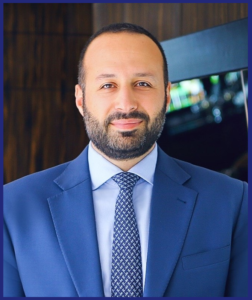
Money Matters: Financial Literacy- A Vaccine for Life
By William Tohme, CFA, Senior Regional Head, Middle East and North Africa, CFA Institute
 What can be done to enable households to make more rational financial decisions? In the wise words of Warren Buffet, one of the greatest investors of all time, invest in yourself by accessing the latest financial education for everyone in your household.
What can be done to enable households to make more rational financial decisions? In the wise words of Warren Buffet, one of the greatest investors of all time, invest in yourself by accessing the latest financial education for everyone in your household.
Our wealth should be no different to our health. Choosing financial literacy for yourself is as valuable as having a vaccine for life. Just as we are choosing to future-proof our health with multiple doses of the COVID-19 vaccine, you need two doses for your financial health: financial literacy combined with experience in financial markets and investment.
Use education as a risk management tool
Imagine stepping onto a flywheel. The first two steps are the hardest. The wheel turns slowly, but it eventually gets up to speed. Financial advisors will help you turn the wheel faster by helping you educate yourself to understand exactly what you are investing in. Conversely, financial literacy allows you to have meaningful conversations with your financial adviser. Once the flywheel starts spinning, it takes less effort to make it turn, and it starts generating revenue for you and your household.
The bottom line is that if you don’t understand what you are investing in, you shouldn’t be investing at all. Make educated decisions to go ahead with financial planning and make the most out of financial markets to meet your own financial goals. And never stop learning, because if you stop learning, you are obsolete. Use what you have learned as a risk management tool for your household so you can safely proceed with financial planning and deploying your savings in the financial markets.
Keep your emotions in check
There is a clear link between psychology, our state of mind, and our long-term financial and investment decisions. You cannot expect great results when you let your emotions drive your investments.
While social media and marketing campaigns are constantly pushing you to invest one way or another, don’t be swayed. Instead, replace the word emotion with discipline. Go by one of the golden rules of managing your wealth: diversify and rebalance your investments into different asset classes.
Don’t let your old self run out of savings
Thanks to science and modern medicine, we might end up living longer than we expect. However, if we outlive our savings, we will run into trouble in our old age. Foreign workers in the GCC must engineer an investment plan to help them compensate for the lack of state-sponsored pensions during their retirement.
Although citizens in the region have a publicly sponsored pension plan, this too may not be enough because we have a higher life expectancy and tend to outlive our savings. These individuals should aim to have a private pension as an additional source of income to sustain themselves during old age.
Taking a bold step over the threshold
Globally, house prices increased by 10.3% on average in 2021, their fastest rate since 2006, according to the Knight Frank global house price index. For many millennials, this means they are being locked out of buying somewhere to live. Real estate is a real asset, and it adjusts to inflation, making it inaccessible for some millennials. Even if they can afford to buy, many choose to be ‘lifestyle renters’ instead of buying homes.
Homeownership was a great way for our grandparents and parents to learn about investing and generating yields or making savings. Today, millennials are becoming divorced from the idea that homeownership is the first step on the investment ladder. Instead, they want to diversify their investments and their golden assets may be a basket of new asset classes coming to the market. This is fine, as long as they have clear knowledge about what they are investing into.
Take a good look at your future self
Picture yourself far into the future and ask yourself, did your risk appetite measure up to your understanding of how much your investment was worth? For example, a designer bag you bought for $10,000 may now be a relic in the bottom of your closet, but had you invested that money into an asset class with just a 3% real interest rate, it would have become $40,000 by the time you retire.
To consider an asset class for investment, it must be an asset class that can yield something for you, and you can ultimately benefit from selling it later. So, before you get excited about a new asset class that looks rosy on social media, ask yourself, what will your investment look like in 45 years?
You undertake great risk when you do not know what you are doing, or you do not understand the asset class you are investing in. It is the responsibility of your financial advisor to explain the risk, but more importantly, for you to educate yourself about the risk of the investment you are about to put your hard-earned savings into.
